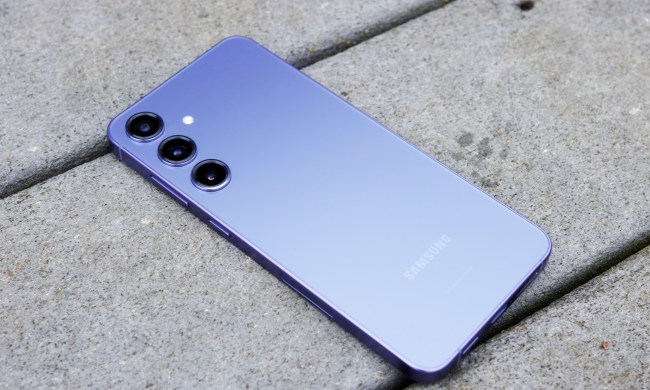The exciting new Galaxy S20 range was described as an “embarrassment of riches,” by Samsung’s Head of Product Management, Paul Scott, ahead of the official launch on February 11. I can’t disagree.
A replacement to last year’s damp squib, the basic Galaxy S10e, has not materialized. Instead, the Galaxy S20 and S20 Plus are joined by the Galaxy S20 Ultra – a true superphone. It joins numerous other flagship phones in Samsung’s confusing product line.
I sat down with Paul Scott, alongside Samsung U.K.’s Corporate Vice President, Conor Pierce, to understand why premium phones are the focus of Samsung’s Galaxy line in 2020.
A new beginning

“We’re celebrating our 10th year of the Galaxy range, we’re starting a new year and a new decade,” Pierce said, explaining the importance of the Galaxy S20’s launch timing. “Plus, we have 5G, so many things are lining up for us to create a new era of communication and entertainment. The Galaxy S20 signifies a new decade for Samsung.”
There it is. Samsung’s preparing for the next 10 years, and doing so with its strongest, spec-heaviest Galaxy S phones yet.
It has three new models: The Galaxy S20, Galaxy S20 Plus, and Galaxy S20 Ultra. Cameras and processors aside, there’s something else that marks as smartphones Samsung sees fitting for your future. All three will come with 5G.
“5G will be a massive catalyst for us, and for people,” Pierce said, adding that Samsung’s U.K. 5G market share was a massive 91%. It gained that level of control with the Galaxy S10 5G, Note 10 5G, and Galaxy Fold (which is only sold as a 5G device in the U.K.). More recently, Samsung also launched the Galaxy A90 5G.
With the launch of the Galaxy S20, Samsung has three more 5G ready phones on offer.
5G is still for early adopters, but not for long
“Buying a 5G phone now is a way of future proofing,” Pierce said. “It’s inevitable in time you will want to use 5G. When you’ve had, 5G you don’t want to go backwards.”
Talk of 5G often focuses on the technology as a concept, however, and not the direct and immediate benefits to owners. What’s Samsung doing to change this? If the new Galaxy S20 phones have 5G, and it’s pushed hard as a reason to buy, we need to know why it matters.
“There’s three main reasons you may want 5G,” Pierce explained, noting the higher data speeds, low latency, and the ability to have more devices connected to the network at one time.
“These are the instant reasons you would want to buy 5G, but we need to bring these features to life. 5G will change the way you live, the way you work, and the way you share,” Pierce told me confidently, “but it will take time to materialize.”
This sets expectations for 5G in early 2020. The technology is there. Now, it needs to be used to build new experiences, or improve those that exist. Samsung is working with carriers on gaming and multimedia experiences that use 5G, and with companies like Microsoft to produce productivity features that rely on 5G.
According to Samsung’s data, 85% of people in the U.K. are interested in 5G now, and 32% expect to upgrade to a 5G phone in the next 12 months. Samsung has already positioned itself to capitalize on this influx with the Galaxy S20 range and its other 5G devices.
Yet there is another trend in smartphones that’s closely tied with the 5G push. The demand for more expensive premium hardware.
The people demand premium
As with 5G, Samsung says the Galaxy S20’s absurd specifications (which include up to 16GB of RAM) were driven by demand.
“This year we’ve listened to people. They want innovation, the best camera, the best screen, and they want 5G for future proofing. Last time we had the Galaxy S10e, and this year we’ve gone the other way,” Scott said. “The premium market is growing, people are willing to spend more […]”
Three Galaxy S20 phones join three Galaxy Note 10 series phones, the Galaxy Fold, and (potentially) the Galaxy Z Flip folding phone too. The cheapest phone is $950 Note 10, and the most expensive is the $2,000 Galaxy Fold, with the Galaxy S20 Ultra coming in at $1,400.
It’s a hugely luxurious collection of top smartphones made for those who want the best tech available right now, and don’t mind paying out for it.
When asked about how Samsung views all these phones, and whether they were labeled flagships in-house, Scott laughed. “Each one becomes like your child,” he said. “You couldn’t be prouder. For us, every phone is a ‘flagship,’ and each one becomes our baby.”
The Galaxy S20 range gives us a look at how Samsung views the next 10 years of smartphone development. It’s prioritizing 5G, top-tier cameras, and excellent internal hardware, inside premium design that looks great but doesn’t come cheap.
Why? Because that’s what we want. If the 2020 Galaxy S range is an embarrassment of riches, we can’t wait to see what it has planned for 2021.
Samsung will release the Galaxy S20, Galaxy S20 Plus, and Galaxy S20 Ultra on March 13.


